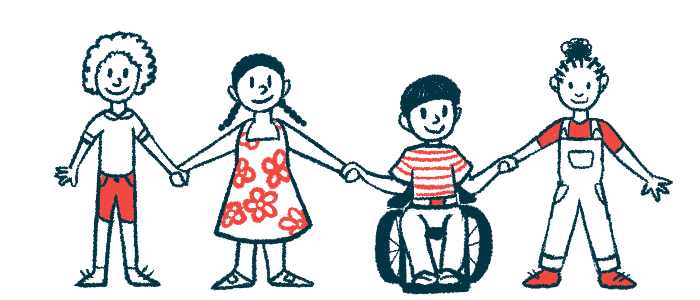Mental health, sleep issues in young people with hEDS affect life quality
Rates of mental health issues higher than general population, similar to adults

Mental health and sleep problems are prevalent in young people with hypermobile Ehlers-Danlos syndrome (hEDS) and have a negative impact oon their quality of life, a study suggests.
Patient-reported anxiety and pain were the symptoms most closely associated with life quality impacts in a group of children and young adults with hEDS.
“Young patients with a diagnosis of hEDS should be screened for mental health conditions and sleep concerns, as they have a negative impact on [health-related quality of life],” wrote the researchers, who said recognizing and treating these conditions early might result in improved function and life quality and over time. The study, “Prevalence of psychiatric and sleep disorders and their impact on quality of life in children with hypermobile Ehlers-Danlos syndrome: an observational study,” was published in Rheumatology International.
The most common type of Ehlers-Danlos syndrome, hEDS, features soft and fragile skin, and overly mobile joints. People with hEDS commonly experience joint dislocations and chronic musculoskeletal pain, among other symptoms.
Mental health issues, such as anxiety and depression, along with sleep issues are also common, occurring in adults with hEDS at rates higher than in the general population. These problems can contribute to worse physical function and poorer life quality.
These problems are also prevalent in children with hEDS, but studies that look at these factors concurrently and assess their effects are lacking, leading researchers to evaluate mental health and sleep disorders, and their effects on quality of life, in 123 children and young adults with hEDS who were up to 22 years old (mean age, 15.8). Most participants were white (92%) and female (77%).
Assessing impacts on mental health, sleep
The medical histories related to their symptoms were collected and the participants completed a host of patient-reported outcome measures related to mental health and sleep symptoms. Quality of life was evaluated with the Pediatric Quality of Life Inventory Rheumatology Module (PEDS-QL Rheum).
Most participants (86%) had at least one psychiatric diagnosis, the most common being anxiety (80%), depression (43%), and attention-deficit/hyperactivity disorder (17%). Around half of the young participants had a previous psychological evaluation, with a similar proportion being on psychiatric medications.
The rates of these mental health problems were higher than what’s seen in the general population, but were consistent with what’s observed in adults with hEDS, the researchers said.
“As both anxiety and depression are elevated … clinicians should be mindful of these areas of concern when seeing patients who have hEDS,” wrote the researchers, who noted that the discrepancy between the high number of psychiatric diagnoses, but relatively lower rate of evaluations or prescribed medications “suggests a discrepancy in needed versus obtained, or available psychological or psychiatric care.”
A little under half reported sleep problems (44%) or poor sleep (42%), and a quarter had a sleep disorder diagnosis. Fewer had a history of a prior sleep evaluation (17%) or used sleep medication (16%).
“Thus, across the entirety of this study, while many patients have mental health and sleep concerns, most have not been evaluated by a mental health or sleep medicine specialist,” the scientists wrote. “There should be a low threshold to refer to appropriate subspecialty care if concerns arise to meet the needs of patients with hEDS.”
A number of evaluated symptoms correlated with one another and greater anxiety and depression were generally associated with sleep problems. Depression, along with anxiety and worse sleep quality on patient-reported assessments, were linked to negative life quality impacts.
In final analyses, anxiety and pain had the greatest impact on life quality; anxiety was significantly associated with the treatment, worry, and communication subscales of the PEDS-QL Rheum, while pain was linked to the pain/hurt and daily activities domains.
“This study suggests mental health screening tools … should be incorporated into routine hEDS screening and care,” wrote the researchers, who said doctors can use these patient-reported measures to identify those who are most at risk and can “use this information to justify more intensive psychological interventions and supports.”
Ethnicity did appear to predict outcomes on the PEDS-QL Rheum treatment subscale, “which may speak to underlying health inequities experienced and reported by some patients that should be evaluated in future work, said the researchers, who said patients at other clinics should also be studied, and their symptoms and life quality impacts should be monitored over time.






